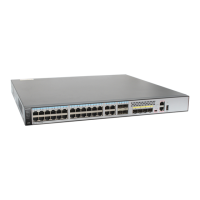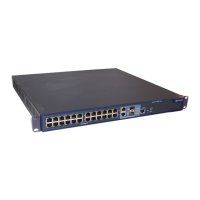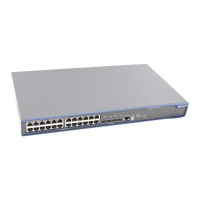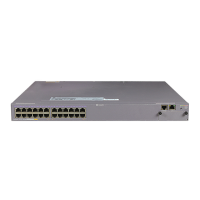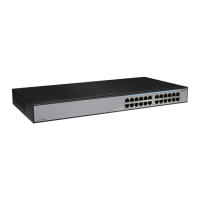Command Manual – Routing Protocol
Quidway S8500 Series Routing Switches Chapter 3 OSPF Configuration Commands
Huawei Technologies Proprietary
3-43
OSPF divides networks into four types by link layer protocol:
z Broadcast: If Ethernet or FDDI is adopted, OSPF defaults the network type to
broadcast.
z Non-Broadcast Muli-access (nbma): If Frame Relay, ATM, HDLC or X.25 is
adopted, OSPF defaults the network type to NBMA.
z Point-to-Multipoint (p2mp): OSPF will not default the network type of any link layer
protocol to p2mp. The general undertaking is to change a partially connected
NBMA network to p2mp network if the NBMA network is not fully-meshed.
z Point-to-point (p2p): If PPP, LAPB or POS is adopted, OSPF defaults the network
type to p2p.
Change the interface type to NBMA if the router does not support multicast addresses
on the broadcast network. You can also change the interface type NBMA to broadcast.
A non-broadcast network with the multi-access capability is considered an NBMA
network only when it is fully meshed, meaning any two routers on it have a direct virtual
circuit between them. If the network is not fully meshed, you must change the network
type of the interface connected to it to p2mp. This allows two routers that are not
directly reachable to exchange routing information through a router that is directly
reachable for both of them.
Change the interface type to p2p if the router has only one peer on the NBMA network.
Note: When the network type of an interface is NBMA or it is changed to NBMA
manually, the peer command must be used to configure the neighboring point.
Related command: ospf dr-priority.
Example
# Set the interface Vlan-interface 10 to NBMA type.
[Quidway] interface Vlan-interface 10
[Quidway-Vlan-interface10] ospf network-type nbma
3.1.43 ospf timer dead
Syntax
ospf timer dead { seconds | minimal multi-hello packets }
undo ospf timer dead [ minimal multi-hello ]
View
Interface view
Parameter
seconds: Dead interval of the OSPF neighbor. It is in seconds and ranges from 1 to
65,535.

